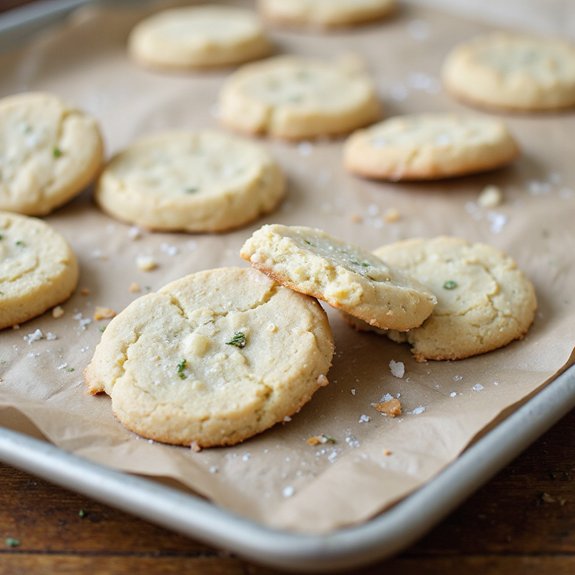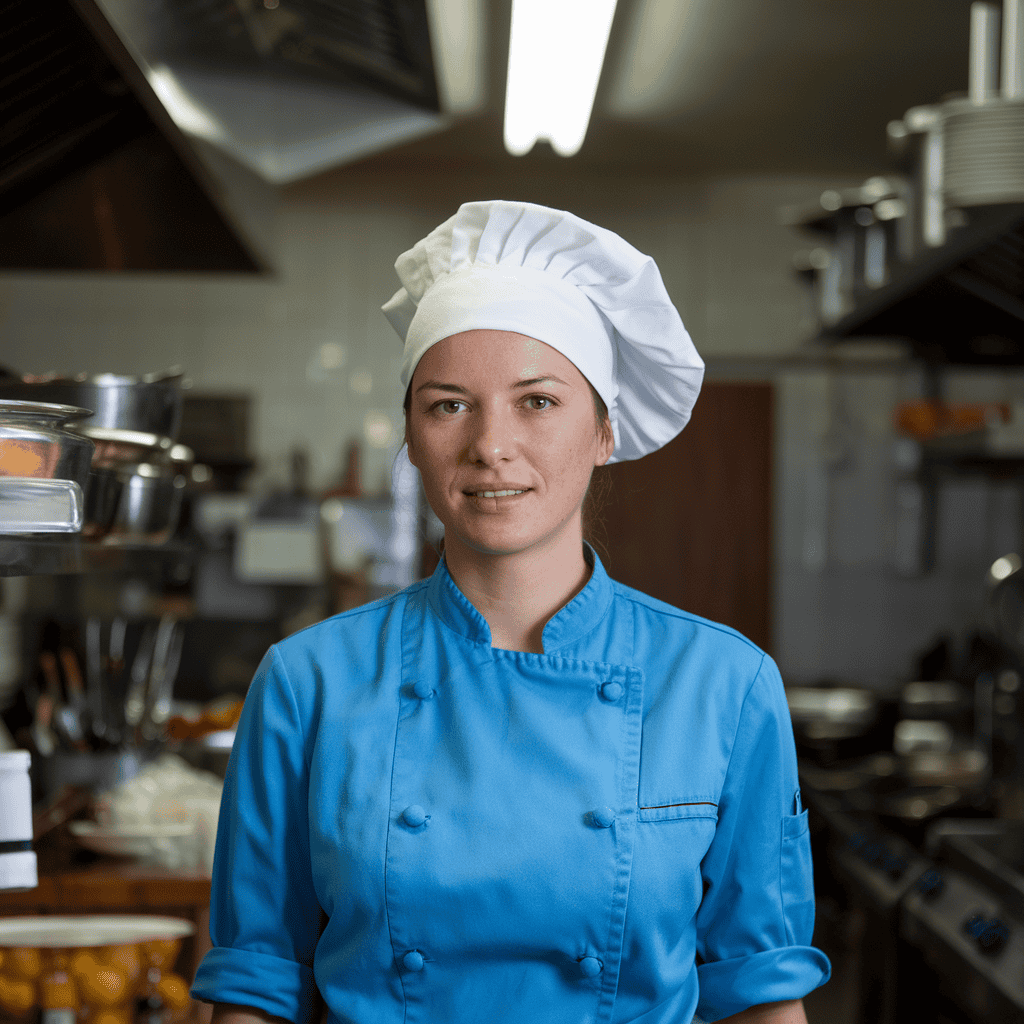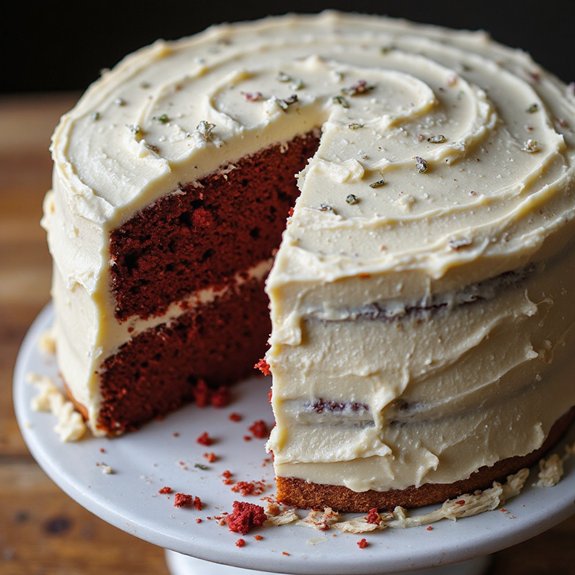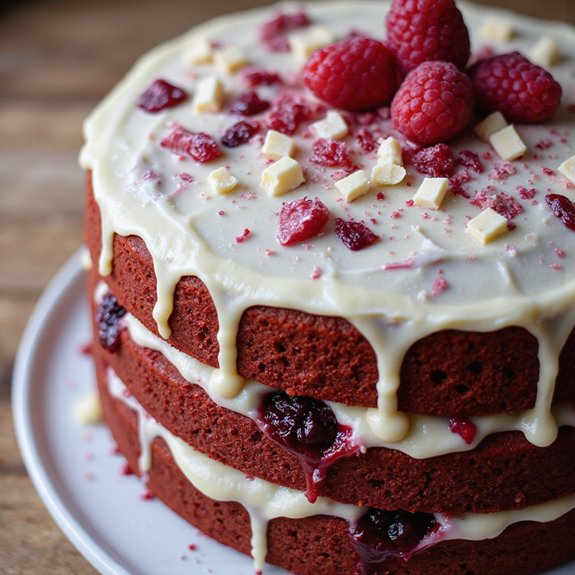Picture a tray of buttery, pale-golden rounds emerging from the oven, their edges just set and their centers soft as velvet. Imagine the gentle snap of sugar against your fingers, the aroma of warm vanilla and almond drifting through the kitchen, and a melt-in-your-mouth bite that feels like a cozy hug on a cool afternoon.
These soft, chewy shortbread cookies are my favorite kind of comfort: simple, soothing, and quietly luxurious.
They’re perfect for busy weeknights when you need a quick treat, for Sunday suppers when coffee begs a companion, or for gifting when only homemade will do.
Once, after a long school concert night, these cookies came together in minutes and saved dessert—no fuss, just a bowl, a whisk, and a little patience while the dough chilled. They’ve been our “instant calm” ever since.
Ready? Let’s cook!
Why You’ll Love It
- Delivers melt-in-your-mouth texture with a tender, chewy bite
- Uses simple pantry staples you likely already have
- Mixes quickly; minimal chilling keeps prep easy
- Bakes gently for rich butter flavor without dryness
- Freezes beautifully; bake dough balls straight from frozen
Ingredients
- 1 cup unsalted butter softened — room-temp for easy creaming (use good European-style if possible)
- 3/4 cup confectioners’ sugar sifted — removes lumps for tender crumb
- 1/4 cup granulated sugar — adds chew and slight caramel notes
- 1 large egg yolk room temperature — richness and binding
- 1 teaspoon vanilla extract — pure extract for best flavor
- 1/4 teaspoon almond extract optional — a hint of nutty aroma
- 2 cups all-purpose flour spooned and leveled — prevents dense dough
- 2 tablespoons cornstarch — extra tenderness
- 1/2 teaspoon fine sea salt — balances sweetness
- 2 tablespoons milk room temperature — adjust for soft, scoopable dough
- 2 tablespoons coarse sugar optional for rolling — sparkly edges and light crunch
Step-by-Step Method
Prep the Pans
Line two baking sheets with parchment paper. Set them aside. This prevents sticking and promotes even browning. Gather remaining tools so everything is ready.
Having sheets prepared makes transferring dough quick once chilled. Keep a wire rack nearby for cooling. Organization helps maintain dough temperature and texture.
Combine Dry Ingredients
Whisk flour, cornstarch, and fine sea salt in a mixing bowl. Break up any clumps for an even mix. Distribute cornstarch thoroughly to enhance tenderness. Set the bowl aside.
Accurate measuring by spooning and leveling flour helps avoid a dry dough. Keep the dry mix ready to add gradually.
Cream the Butter and Sugars
Beat softened unsalted butter with confectioners’ sugar and granulated sugar on medium speed. Mix for about two minutes until light and creamy. Incorporate air for a soft, tender crumb. Scrape the bowl as needed to ensure even mixing. Avoid overbeating once light and fluffy.
Add Egg and Extracts
Beat in the egg yolk, vanilla extract, and optional almond extract. Mix until fully combined and smooth. This boosts richness and flavor. Scrape the sides and bottom to prevent streaks. Keep the mixer on medium-low to avoid overworking. Stop once the mixture looks cohesive and satiny.
Incorporate Dry Ingredients
Reduce mixer speed to low. Gradually add the whisked flour mixture. Mix just until a soft dough forms. Stop as soon as no dry streaks remain to limit gluten development. Overmixing toughens cookies. Scrape the bowl with a spatula to gather any pockets of flour gently.
Adjust with Milk
Add milk one tablespoon at a time. Mix on low until dough is smooth, soft, and scoopable but not sticky. If crumbly, add another teaspoon as needed. If too soft, plan a longer chill. Aim for dough that holds its shape when scooped and rolled without clinging to hands.
Chill the Dough
Cover the bowl and refrigerate for 30 minutes. Firm the fats to reduce spreading. Use this time to clear space and preheat the oven near the end. Chilling also relaxes gluten for better texture. Don’t skip this step for clean edges and consistent thickness.
Preheat the Oven
Heat the oven to 350°F (175°C) near the end of chilling. Make certain racks are centered for even baking. Verify temperature with an oven thermometer if possible. A properly heated oven sets edges quickly. Prepare coarse sugar if rolling for extra sparkle and light crunch.
Portion and Roll
Scoop 1.5-tablespoon portions using a cookie scoop. Roll each portion into a smooth ball. If desired, roll lightly in coarse sugar for texture. Aim for uniform size for even baking. Work quickly to keep dough cool. Place formed balls on the prepared sheets.
Flatten Evenly
Arrange dough balls 2 inches apart on the lined sheets. Gently flatten each to about 1/2 inch thick using your palm or a flat-bottomed glass. Avoid overpressing to keep centers plush. Re-shape edges if needed for neat rounds. Rotate any sugar-coated side up.
Bake to Just-Set
Bake one sheet at a time for 10–12 minutes. Look for set edges and pale golden bottoms while tops remain light. Avoid browning to keep a soft, chewy texture. Rotate the sheet once if your oven bakes unevenly. Remove promptly when set to prevent overbaking.
Cool and Store
Cool cookies on the sheet for 5 minutes. Transfer to a wire rack to cool completely. Store in an airtight container once cool. Add a slice of bread or a piece of apple to retain moisture. Freeze unbaked dough balls for up to two months and bake from frozen, adding 1–2 minutes.
Ingredient Swaps
- Butter: Use plant-based butter sticks for dairy-free; for budget, use salted butter and reduce added salt to a pinch.
- Flour: Swap 1:1 gluten-free all-purpose blend (with xanthan gum) for GF; or use half cake flour for extra tenderness.
- Sugars: Replace confectioners’ sugar with equal weight powdered coconut sugar (softer, caramel notes) or blend granulated sugar to powder.
- Egg yolk: Substitute 1 tablespoon milk + 1 teaspoon cornstarch, or 1 tablespoon aquafaba for egg-free.
- Milk: Any dairy-free milk works; evaporated milk for richer flavor if available.
- Extracts: Use all vanilla if almond isn’t available; try lemon, orange, or maple extract regionally.
- Coarse sugar roll: Swap with sanding sugar, turbinado, or skip entirely.
You Must Know
Doneness • If edges look matte but tops still pale and soft to the touch at 10–12 minutes, pull them; carryover heat finishes them so they stay chewy and the bottoms should be just light golden.
Troubleshoot • When dough cracks when scooping/rolling, knead in 1–2 teaspoons milk, 10–15 seconds; low hydration makes shortbread crumbly, and it should feel pliable like soft Play-Doh.
Avoid • Avoid beating after flour is added beyond 30–45 seconds; overdeveloped gluten turns cookies cakey/firm—watch for dough just coming together with no dry pockets.
Scale • For a half batch, use 1 egg yolk beaten and measure out 1 tablespoon (about 15 g); for a double batch, chill in two flat disks so the center cools evenly within 30 minutes.
Flavor Boost • For deeper aroma, brown 2–3 tablespoons of the butter (reduce total butter by same amount of water loss, ~1 teaspoon) and add 1/8 teaspoon fine salt; nutty notes pop at 350°F with light bottoms.
Serving Tips
- Dust with confectioners’ sugar and serve with hot tea or coffee.
- Pair with fresh berries and a dollop of lightly sweetened whipped cream.
- Sandwich two cookies with lemon curd or raspberry jam.
- Crumble over vanilla ice cream; drizzle with warm caramel.
- Arrange on a cheese board with aged cheddar and sliced apples.
Storage & Make-Ahead
Store baked cookies in an airtight container at room temperature for 4–5 days.
Or refrigerate up to 10 days.
For make-ahead, refrigerate dough up to 3 days.
Freeze dough balls or baked cookies airtight for up to 2 months.
Bake frozen dough straight from the freezer, adding 1–2 minutes.
Reheating
To gently reheat shortbread, use: microwave 5–8 seconds per cookie.
Oven at 300°F for 4–6 minutes on a sheet.
Or stovetop skillet, low heat, 1–2 minutes per side.
Hogmanay Tea Tradition
While the year slips toward midnight, I brew a strong pot of tea and set out a plate of soft, sugar-dusted shortbread—the way my gran did for Hogmanay.
I like a malty Assam or a brisk Scottish blend; their tannins make the butter bloom. I warm the teapot, swirl in boiling water, then steep fresh leaves for four minutes—no more—so the cup tastes bold, not bitter.
I arrange the shortbread you’ve baked—tender centers, pale tops, faintly golden bottoms—beside little bowls of marmalade and honey.
We clink cups, take first bites for luck, and let the room fill with steam and citrus. If you’re hosting, keep another tray ready; shortbread vanishes. Refill the pot, pass seconds, and welcome the new year gently, sweetly.
Final Thoughts
Ready to bake a batch? Give these soft, chewy shortbread cookies a try as written, or tweak the flavors with a pinch of citrus zest, a dash of almond, or a sugar roll for sparkle—then tell me your favorite version!
Frequently Asked Questions
How Can I Make These Cookies Gluten-Free Without Sacrificing Chewiness?
Use a 1:1 gluten-free baking blend plus 2 tablespoons almond flour, keep cornstarch, and add 1/4 teaspoon xanthan gum. I’ll chill longer, mix gently, and bake just-set—chewy centers, tender crumb, buttery edges, cozy magic.
What Causes Greasy Shortbread and How Can I Fix It?
Greasy cookies come from too-warm butter, overmixing, or low flour. I’ll chill the dough, gently mix after flour, and bake just set. If slick, blot warm tops, cool completely, and add a tablespoon flour next batch.
Can I Color the Dough for Holiday Themes Without Affecting Texture?
Yes—you can tint it without changing texture. I gently knead gel or powdered color into chilled dough, divide for swirls, avoid liquid dyes, and mix minimally. Festive hues bloom like twinkle lights, while the crumb stays tender.
How Do High Altitudes Affect Spread and Baking Time?
They spread more and bake faster at high altitude. I’d lower sugar slightly, add a tablespoon flour, chill longer, and reduce leavening if any. Bake a minute less, watch pale edges, and trust aroma—gentle, golden whispers.
Which Cookie Stamps or Molds Work Best With This Dough?
Use deep-cut metal stamps or patterned wooden molds; they imprint cleanly after a 30‑minute chill. I dust with rice flour, press 1/4–1/2 inch thick, then re-chill ten minutes—crisp impressions, cozy edges, no sticking, beautiful detail.
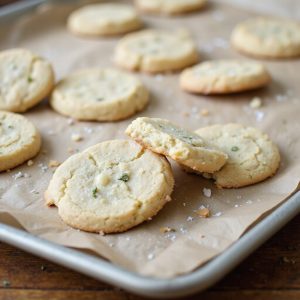
Soft Chewy Shortbread Cookies
Equipment
- 2 Mixing bowl
- 1 hand mixer or stand mixer with paddle attachment
- 1 Whisk
- 1 Rubber spatula
- 1 Measuring cups set
- 1 Measuring spoons set
- 2 Baking sheet
- 2 parchment paper sheet
- 1 wire cooling rack
- 1 Cookie scoop 1.5 tablespoon
- 1 Rolling Pin optional
- 1 Sieve for confectioners’ sugar
Ingredients
- 1 cup unsalted butter softened
- 3/4 cup confectioners’ sugar sifted
- 1/4 cup granulated sugar
- 1 large egg yolk room temperature
- 1 teaspoon vanilla extract
- 1/4 teaspoon almond extract optional
- 2 cup all-purpose flour spooned and leveled
- 2 tablespoon cornstarch
- 1/2 teaspoon fine sea salt
- 2 tablespoon milk room temperature
- 2 tablespoon coarse sugar optional for rolling
Instructions
- Line two baking sheets with parchment paper and set aside.
- In a mixing bowl whisk together flour, cornstarch, and salt.
- In a separate large bowl beat softened butter, confectioners’ sugar, and granulated sugar with a mixer on medium until light and creamy, about 2 minutes.
- Beat in the egg yolk, vanilla extract, and almond extract until fully combined.
- Reduce mixer speed to low and gradually add the dry ingredients, mixing just until a soft dough forms.
- Mix in the milk 1 tablespoon at a time until the dough is smooth, soft, and scoopable but not sticky.
- Cover the bowl and chill the dough for 30 minutes to help prevent spreading.
- Preheat the oven to 350°F (175°C) near the end of chilling.
- Scoop 1.5-tablespoon portions of dough, roll into balls, and, if desired, roll lightly in coarse sugar.
- Arrange dough balls 2 inches apart on prepared sheets and gently flatten to about 1/2 inch thick with your palm or the bottom of a glass.
- Bake one sheet at a time for 10–12 minutes until edges are set and bottoms are pale golden but tops remain light.
- Cool on the sheet for 5 minutes, then transfer cookies to a wire rack to cool completely.

